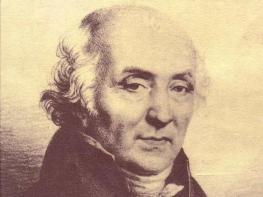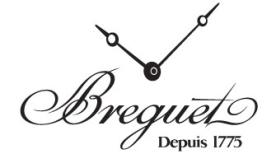Following in Abraham-Louis Breguet’s Parisian footsteps visiting historical locations concerning the man who is arguably horology’s most famous watchmaker.
The first stop – quite unexpectedly – is the Eiffel Tower. The iconic iron lattice structure named for its builder, engineer Gustave Eiffel, was engraved on the sides underneath the first balcony with 72 names of the city’s scientific heroes, which include a gold-colored “Breguet” in 60-centimeter-high letters (the engraving was painted over at the beginning of the twentieth century and restored in 1987 and 2011). While it might be logical to think this is in reference to Abraham-Louis, remember that the Eiffel Tower was built in 1889 as an homage to technology meant to impress visitors to the World’s Fair held in the city of lights in that year. Thus, the word “Breguet” actually signifies Louis-François-Clement Breguet, grandson of the great watchmaker, who was appointed to the Bureau of Longitudes in 1843 and awarded the Legion d’Honneur in 1845 for his work with watchmaking, physics and telegraphy. After his father, Louis-Antoine Breguet, retired from working in the family business in 1833, Louis-François managed Breguet et Fils, which he diversified by adding scientific instruments to the product roster such as electric thermometers, electrically synchronized clocks and telegraph instruments.
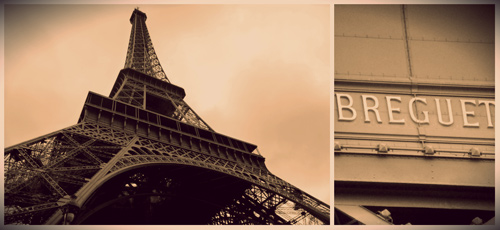
Quai de l’Horloge
In 1775, Abraham-Louis Breguet married Cécile L’huillier and they set up home within Breguet’s company premises, then known as 51, Quai de l’Horloge (the address of the house was changed to 39 in the 1920s). The street name, which means “Quay of the Clock,” refers to a large, famous clock at house number one, just a few blocks down. Located on the Tour de l’Horloge of the former royal palace and prison La Conciergie (part of the large Palais de Justice), it was the first public clock in Paris, installed around 1370 and subsequently refurbished several times. It was commissioned by Charles V and created by Henri de Vic, a clockmaker from the Lorraine region of France. Additionally, during that era several watchmakers such as Ferdinand Berthoud and Jean-Antoine Lépine (who were also both watchmakers to the French king) had set up shop on this riverside street in Ile de la Cité.
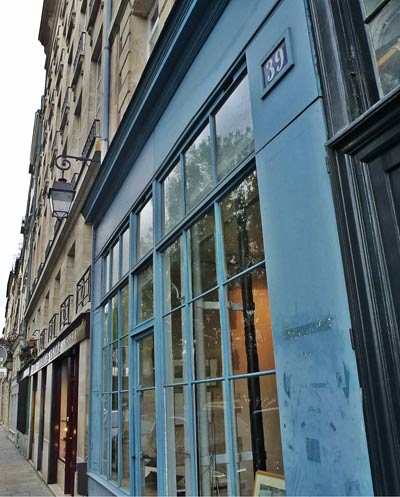
Spiritual homes
Most people make the pilgrimage to the world-famous Père-Lachaise cemetery to honor Doors lead singer Jim Morrison, while some come to see the opulent graves of Frédéric Chopin and Oscar Wilde. Few know that the Breguet family mausoleum is also located here. Indeed, very few know that the extended Breguet family is alive and well and living in Paris and still own the historical house on the Quai de l’Horloge, which now houses an art gallery on the ground floor. Emmanuel Breguet, a direct descendant of the famous watchmaker, works for Montres Breguet as the brand manager for France, though he is also the historian in charge of Abraham-Louis Breguet’s artifacts. He holds the official title “head of archives and historic collections.”
Like many of the old sites at Père-Lachaise, which opened its gates in 1804, the small mausoleum belonging to the Breguet family has fallen into disrepair: Abraham-Louis’ bust is now haphazardly located inside the little building instead of on top of it where it historically has been placed.

In modern times, however, Breguet is often best associated with one of his most famous clients: Marie Antoinette. This circumstance is due in great part to the complicated pocket watch unofficially named for her that has experienced mysterious occurences in recent decades. Swatch Group chairman Nicolas G. Hayek had set about making a replica of it in the modern workshops in 2005, as it had been stolen without a trace some years before. This unexpectedly led to Montres Breguet financing the lion’s share of the massive restoration of Versailles’ Petit Trianon, the palace building that the young Austrian queen called home, which was originally completed in 1768. It came about when Hayek learned that Marie Antoinette’s favorite oak tree was about to be felled. He offered to buy some of its wood to make the box to house the replica of the “Marie Antoinette.” As the story goes, Versailles was happy to offer it for free. Hayek, however, countered by offering to finance the lion’s share of the restoration of the Petit Trianon, which, according to The New York Times, cost $7.34 million.
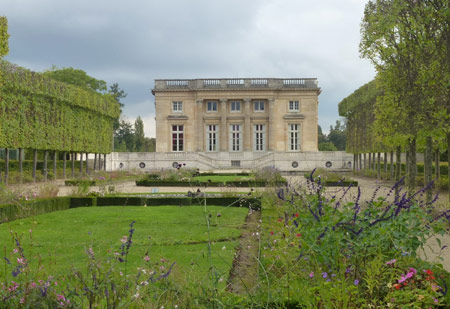
Museum-worthy
Today, Breguet’s works can be found in many notable museums all over the world. The original Marie Antoinette – now returned – can be viewed at the LA Mayer Museum for Islamic Art in Jerusalem. Several pieces are located in London’s British Museum and other watch-specialized museums such as the Patek Philippe Museum in Geneva.
The most famous museum in the world is also home to a few of Breguet’s works and even sponsored a high-profile exhibition of the famous watchmaker’s works in 2009: the Louvre. Paris’ Musée des Arts et Métiers also has several timepieces on exhibit. Some of the most historical pieces are, however, definitely found at the Breguet boutique on Place Vendôme, which houses a museum on its top floor. Here one can see not only all of the brand’s historical ledgers and manuscripts, but also a good one-third of the historical timepieces in Montres Breguet’s full collection. The oldest one on display in Paris is the first Perpetuelle from 1782.
Another 40 or so historical pieces are on display at the Zurich boutique on Bahnhofstrasse and yet another 30 in the recently opened boutique in Shanghai. The rest are located at the factory in L'Orient.
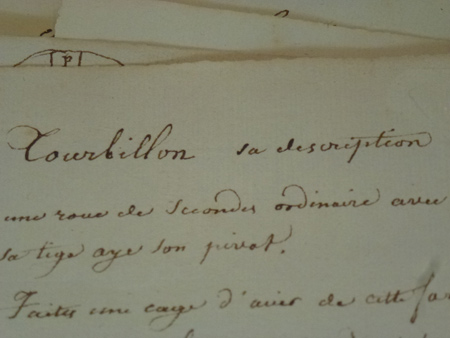

Quai de l’Horloge
In 1775, Abraham-Louis Breguet married Cécile L’huillier and they set up home within Breguet’s company premises, then known as 51, Quai de l’Horloge (the address of the house was changed to 39 in the 1920s). The street name, which means “Quay of the Clock,” refers to a large, famous clock at house number one, just a few blocks down. Located on the Tour de l’Horloge of the former royal palace and prison La Conciergie (part of the large Palais de Justice), it was the first public clock in Paris, installed around 1370 and subsequently refurbished several times. It was commissioned by Charles V and created by Henri de Vic, a clockmaker from the Lorraine region of France. Additionally, during that era several watchmakers such as Ferdinand Berthoud and Jean-Antoine Lépine (who were also both watchmakers to the French king) had set up shop on this riverside street in Ile de la Cité.

Spiritual homes
Most people make the pilgrimage to the world-famous Père-Lachaise cemetery to honor Doors lead singer Jim Morrison, while some come to see the opulent graves of Frédéric Chopin and Oscar Wilde. Few know that the Breguet family mausoleum is also located here. Indeed, very few know that the extended Breguet family is alive and well and living in Paris and still own the historical house on the Quai de l’Horloge, which now houses an art gallery on the ground floor. Emmanuel Breguet, a direct descendant of the famous watchmaker, works for Montres Breguet as the brand manager for France, though he is also the historian in charge of Abraham-Louis Breguet’s artifacts. He holds the official title “head of archives and historic collections.”
Like many of the old sites at Père-Lachaise, which opened its gates in 1804, the small mausoleum belonging to the Breguet family has fallen into disrepair: Abraham-Louis’ bust is now haphazardly located inside the little building instead of on top of it where it historically has been placed.

In modern times, however, Breguet is often best associated with one of his most famous clients: Marie Antoinette. This circumstance is due in great part to the complicated pocket watch unofficially named for her that has experienced mysterious occurences in recent decades. Swatch Group chairman Nicolas G. Hayek had set about making a replica of it in the modern workshops in 2005, as it had been stolen without a trace some years before. This unexpectedly led to Montres Breguet financing the lion’s share of the massive restoration of Versailles’ Petit Trianon, the palace building that the young Austrian queen called home, which was originally completed in 1768. It came about when Hayek learned that Marie Antoinette’s favorite oak tree was about to be felled. He offered to buy some of its wood to make the box to house the replica of the “Marie Antoinette.” As the story goes, Versailles was happy to offer it for free. Hayek, however, countered by offering to finance the lion’s share of the restoration of the Petit Trianon, which, according to The New York Times, cost $7.34 million.

Museum-worthy
Today, Breguet’s works can be found in many notable museums all over the world. The original Marie Antoinette – now returned – can be viewed at the LA Mayer Museum for Islamic Art in Jerusalem. Several pieces are located in London’s British Museum and other watch-specialized museums such as the Patek Philippe Museum in Geneva.
The most famous museum in the world is also home to a few of Breguet’s works and even sponsored a high-profile exhibition of the famous watchmaker’s works in 2009: the Louvre. Paris’ Musée des Arts et Métiers also has several timepieces on exhibit. Some of the most historical pieces are, however, definitely found at the Breguet boutique on Place Vendôme, which houses a museum on its top floor. Here one can see not only all of the brand’s historical ledgers and manuscripts, but also a good one-third of the historical timepieces in Montres Breguet’s full collection. The oldest one on display in Paris is the first Perpetuelle from 1782.
Another 40 or so historical pieces are on display at the Zurich boutique on Bahnhofstrasse and yet another 30 in the recently opened boutique in Shanghai. The rest are located at the factory in L'Orient.

Featured brand
